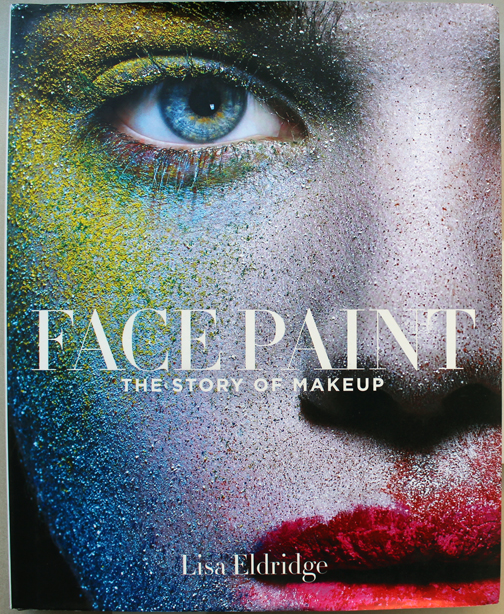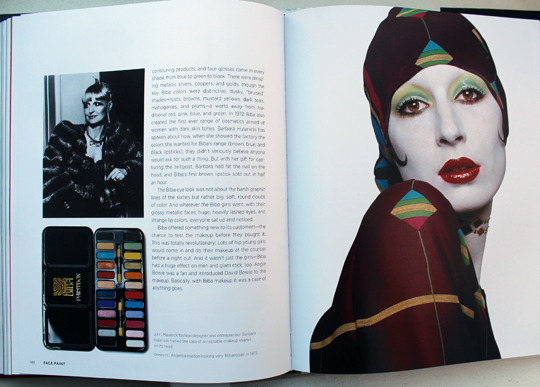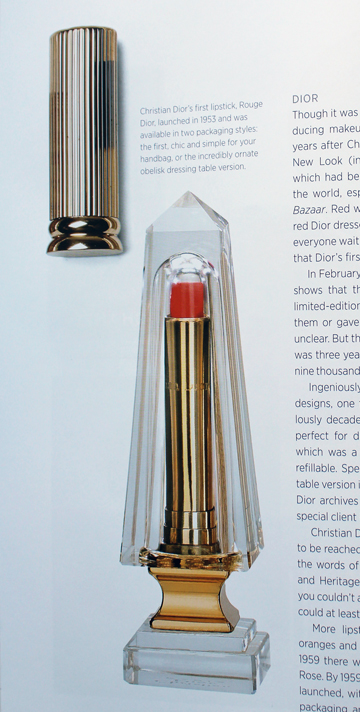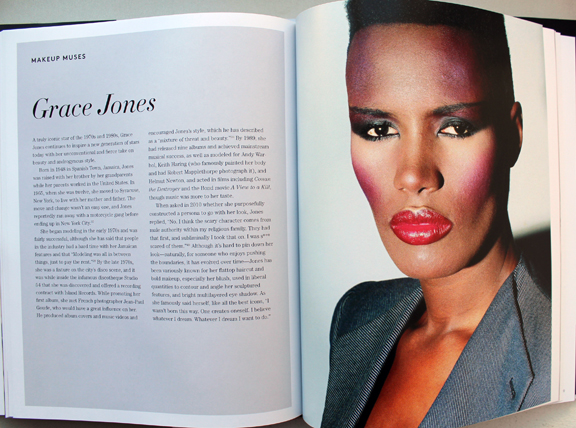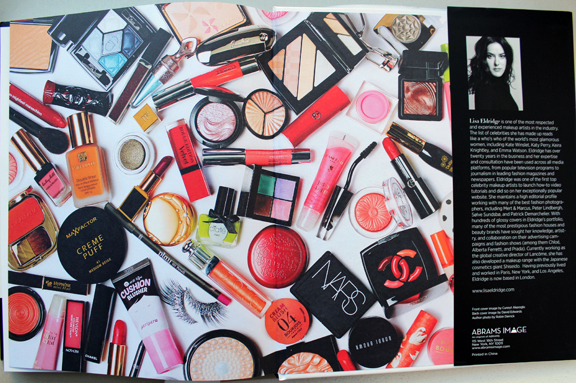I had been salivating over this book since I found out the release date way back in the spring, and it did not disappoint. Celebrity makeup artist Lisa Eldridge published a broad yet fairly in-depth summary of cosmetic products and usage from ancient times to today.
Section 1 is divided into three sections detailing the history of the base colors historically used for cosmetics: red, white and black. Eldridge covers not only the ingredients used to make these pigments but also traces exactly how they were used in various eras, i.e. how rouged cheeks and lips, fair complexions and black eye liner were trending (or not) throughout history. Equally impressive is that these first two categories weren't simply a parroting of the information in Lips of Luxury, or the powder history in Ode to the Complexion (which I will get around to reviewing eventually.)
Section 2 focuses on all aspects of how the beauty industry developed into the one we know today, beginning with the evolution of cosmetics marketing and advertising. I know what you're thinking – this section probably started with the late 1800s/early 1900s, but you'd be wrong. Eldridge traces beauty marketing all the way back to the Renaissance, dissecting how the messages contained in beauty advertising changed over time. The second part of this section discusses the big beauty company founders like Max Factor, Helena Rubinstein, and Elizabeth Arden. But there were some unexpected bios of the women who began more indie lines, like Mary Quant and Barbara Hulanicki, who started Biba.
The third part of Section 2 deals with the rise of our basic products – mascara, lipstick, eye shadow, blush, foundation/powder, bronzer and nail polish – along with the companies that pioneered these items. I liked how Eldridge came up with a logical arrangement of these brands into overarching categories: couture houses, perfume companies, drugstore mainstays and makeup artists.
Section 2 ends with what lies ahead for makeup in terms of technological advances, while the afterword is a brief but meaningful analysis of the significance of wearing (or not wearing) makeup nowadays. I like the last line: "Ultimately, nothing empowers a woman more than the right to a good education, and the freedom to choose whether to wear a red lip and smoky eye…or not."
The whole book is sprinkled with profiles of Eldridge's "makeup muses," women who are associated with particular beauty looks that continue to inspire makeup artists today.
There are also some really cool avant-garde looks throughout…I just wish I knew whether Eldridge herself created them. I'm assuming she did.
I loved the back cover too – doesn't this picture just make you want to dive into a pile of makeup?!
Relating a global history of makeup is a daunting task, and Eldridge did it well. This is not your standard makeup history book as it provides an in-depth look at not just the industry and cosmetic products but also their applications throughout history. Now, I love me some coffee table books with pretty pictures of beautiful makeup and hope to publish my own someday. I adore books that are basically eye candy and provide scant information on the objects. And obviously one of the main goals of the Makeup Museum is to show that beauty objects themselves can be art or cultural artifacts and that their meaning goes beyond their basic utilitarian purpose. But what I liked about Face Paint is that it got me out of my usual way of thinking about makeup mostly as art/cultural object. That's all well and good, but it's important to also reflect on makeup's roots, i.e. why it was invented in the first place. Face Paint was a great reminder for me to consider not just the design or cultural significance of a makeup object but how it's used, and hopefully I will keep this in mind going forward with various books and exhibitions. This aspect of Face Paint has the added bonus of appealing to a wide market - it's a gem for makeup collectors and non-collectors alike. Also, if anyone is going to discuss makeup application throughout the years, it's Eldridge. She has the same appreciation I do for package design, but also the perspective of a world-famous makeup artist who has spent countless hours actually applying it on thousands of people.
Will you be buying Face Paint, either for yourself or for that special makeup aficionado in your life? If you do treat yourself, be sure to check out the sources at the end. I know I've added several books to my wishlist!


